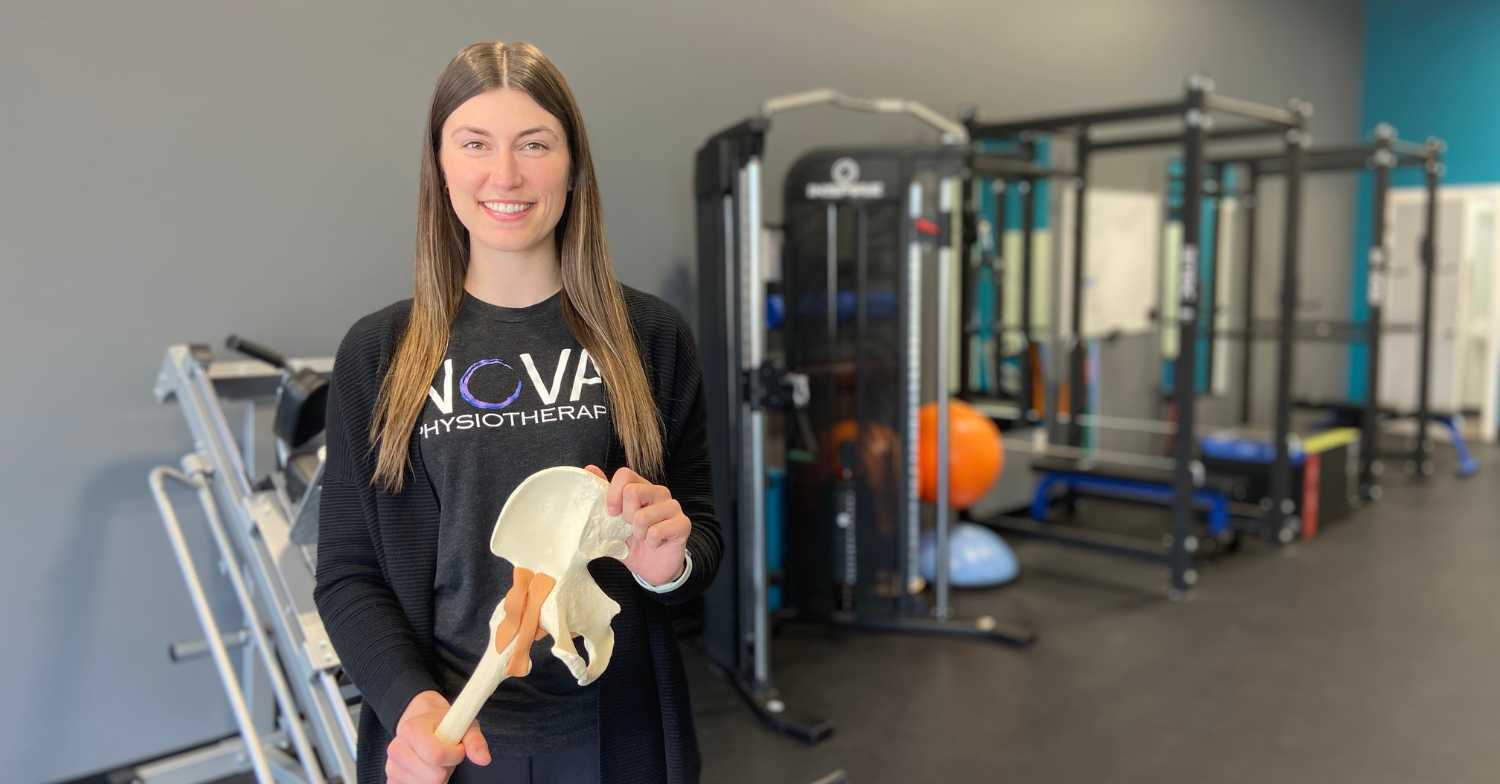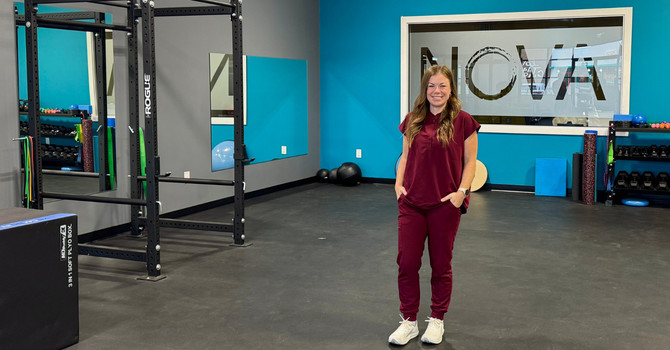
Have you or someone you know been diagnosed with osteoarthritis? Is your osteoarthritis affecting your ability to participate in activities that you enjoy? Physiotherapy has been known to play a significant role in the management of osteoarthritis. Read below to learn more about osteoarthritis and how a physiotherapist may help you manage your condition and help improve your quality of life.
What is Osteoarthritis?
The term osteoarthritis can be broken down into smaller components to help us better understand the meaning of the word:
Osteo = relating to bones
Arthro = relating to joints
Itis = pain and/or inflammation
Osteoarthritis (OA) is a degenerative joint condition that can cause stiffness, inflammation, and pain to various joints in the body. Inside your joint, there is a layer of cartilage that provides a buffer between the bony surfaces and provides a smooth surface for the bones in your joint to glide and move. In OA, this layer of cartilage deteriorates and breaks down over time, which can expose the underlying bone in the joint. As more bone is exposed in the joint there becomes increased stress and friction inside the joint, and the joint space begins to narrow. In severe cases of OA, the bones may produce bony overgrowths or bone spurs and the bony surfaces may rub together.
Joint changes in OA usually occur slowly and worsen over time. OA is commonly found in the hips and knees but can occur in any joint in the body including the hands, shoulders, spine, and feet. Osteoarthritis is often diagnosed by the symptoms that a person is experiencing alongside medical imaging, such as an x-ray or MRI. In many cases, an individual may have radiological signs of osteoarthritis, but do not actually experience any symptoms. The effect osteoarthritis on an individual can vary greatly from person to person.
There is not one cause of OA, however, there are multiple factors that can increase your risk of developing OA, including:
- Older age
- History of a joint or bone injury
- Repetitive stress to a joint from sports or jpb duties
- Family history of osteoarthritis
- Increased body mass
- Smoking
- Osteoarthritis in another location in the body
OA can impact your joint range of motion, strength, and tolerance to activities that you usually enjoy pain-free. An individual with OA may experience one or more of the following signs or symptoms:
- Joint stiffness after sitting for long periods with the knee in a bent or straight position.
- Joint stiffness first thing in the morning.
- Joint pain during or after activities in which you are using the joint repetitively such as typing on the computer, repetitive lifting, walking, or going up and down stairs.
- Increased tenderness to touch along the joint.
- Joint instability or feeling as if the joint is ‘buckling’.
- Decreased joint range of motion.
- Occasional swelling and inflammation to the joint after activity.
- Grinding, clicking, popping sensation to the affected joints.
Why Work with Physiotherapy
The degenerative changes that occur with OA cannot be reversed, however, there are many treatment options that your physiotherapist can provide to help you decrease pain and increase movement, strength, and function. After beginning physiotherapy treatment, many individuals find that they are able to manage their OA symptoms and continue to be active.
In more severe cases of osteoarthritis, a doctor may recommend that an individual undergoes joint replacement surgery. Physiotherapy can also play an important role in an individual's preparation prior to receiving a joint replacement by helping the individual increase muscle strength to aid in an easier recovery. Physiotherapy is also strongly recommended for an individual’s treatment plan and recovery process after a joint replacement.
What to Expect from Treatment
When you book in at Nova Physiotherapy, one of our knowledgeable physiotherapists will guide you through managing your OA. During your first assessment, our physiotherapists will start with a thorough history of your OA and then perform a biomechanical assessment which will help identify areas of weakness and areas with limited mobility. From there, our physiotherapists will work with you and use a variety of tools to create a treatment plan for you. Your physical therapist may include things such as:
- Range of motion exercises
- Strength-based exercise instruction
- Manual therapy techniques (hands on techniques)
- Activity and exercise recommendations
- Modalities such as heat or ice
- Educational information
When treating individuals with osteoarthritis, our goal is to help you find ways to manage and reduce pain, help you learn about your condition, improve your joint function, and slow down the progression of your OA.
The 3 main focuses of treatment are:
1. Improving strength
Beginning a strength training program may feel intimidating when you are experiencing joint pain, but improving muscular strength is one of the most effective ways to manage osteoarthritis. Improving your strength can help support and offload arthritic joints and ease joint pain. Whether you are new to exercise or have lots of experience with exercise, the therapists at Nova Physiotherapy can help you create a strength training program that is best suited for you.
2. Improving joint mobility
A common sign of arthritis is reduced joint range of motion. At your physiotherapy appointment, your therapist may teach you range of motion exercises to help improve your joint mobility. Physical therapists can also use manual therapy techniques to help improve your joint range of motion during your treatment session. Improving and maintaining joint range of motion prior to having joint replacement surgery can also help make the recovery process easier.
3. Symptom management
By improving your strength and joint mobility, you have already taken the first step towards symptom management! At physiotherapy, your therapist may use manual therapy or modalities during your treatment to reduce pain levels. You may also learn different ways to help manage your pain and inflammation on your own at home. Your physical therapist may suggest different ways to modify activities to help reduce pain levels.
Although having osteoarthritis can make activities you love more challenging, physiotherapy can help you navigate these challenges and get back to participating in the things you love! You do not need to be referred by a doctor to begin physiotherapy for your osteoarthritis, so consult with one of our physiotherapists at Nova Physiotherapy to learn more about your OA and how to manage it.
We are excited to work with you to create a plan tailored to your specific needs! To get started, book online or phone the clinic at 306-382-3332!


.jpg)

